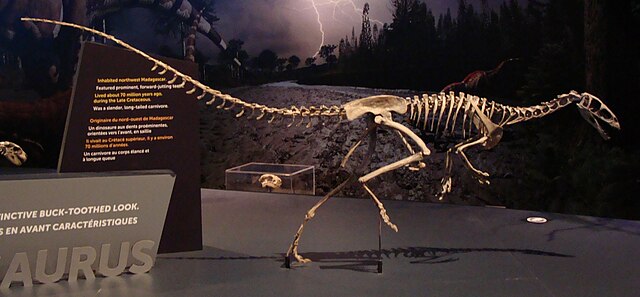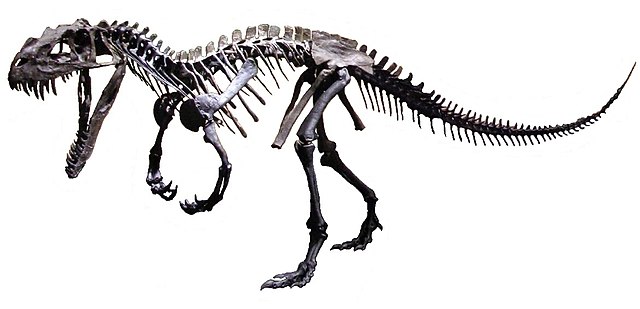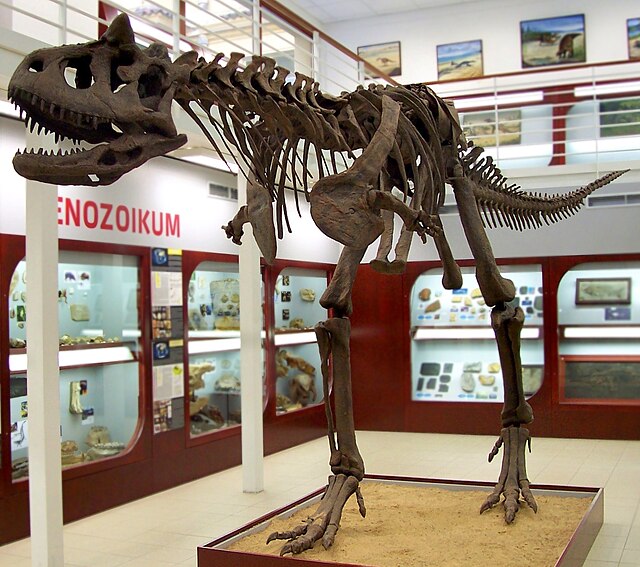Noasauridae is an extinct family of theropod dinosaurs belonging to the group Ceratosauria. They were closely related to the short-armed abelisaurids, although most noasaurids had much more traditional body types generally similar to other theropods. Their heads, on the other hand, had unusual adaptations depending on the subfamily. 'Traditional' noasaurids, sometimes grouped in the subfamily Noasaurinae, had sharp teeth which splayed outwards from a downturned lower jaw.
Noasauridae
A skull diagram of Masiakasaurus, the most complete and well-known noasaurine
A skeletal diagram of Limusaurus, the most complete and well-known elaphrosaurine
Velocisaurus, a small and swift noasaurine
Ceratosaurs are members of the clade Ceratosauria, a group of dinosaurs defined as all theropods sharing a more recent common ancestor with Ceratosaurus than with birds. The oldest known ceratosaur, Saltriovenator, dates to the earliest part of the Jurassic, around 199 million years ago. Ceratosauria includes three major clades: Ceratosauridae, Noasauridae, and Abelisauridae, found primarily in the Southern Hemisphere. Originally, Ceratosauria included the above dinosaurs plus the Late Triassic to Early Jurassic Coelophysoidea and Dilophosauridae, implying a much earlier divergence of ceratosaurs from other theropods. However, most recent studies have shown that coelophysoids and dilophosaurids do not form a natural group with other ceratosaurs, and are excluded from this group.
Image: Ceratosaurus mounted white background
Image: Carnotaurus, Chlupáč Museum, Prague 2
Skeletal reconstruction of Masiakasaurus






